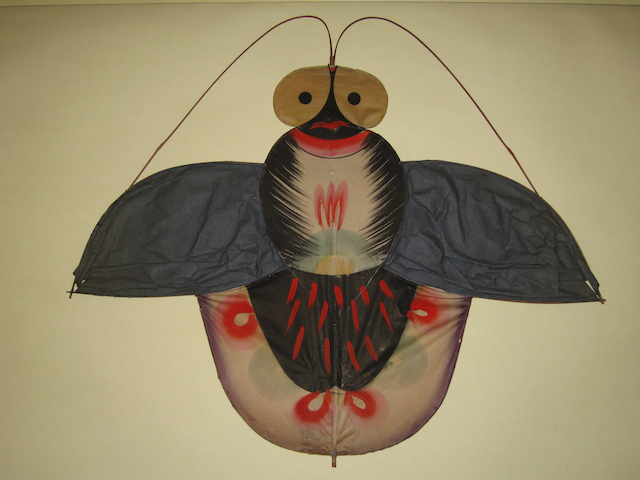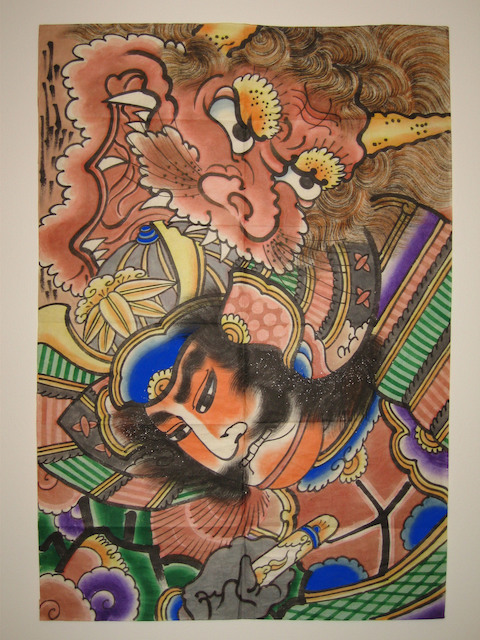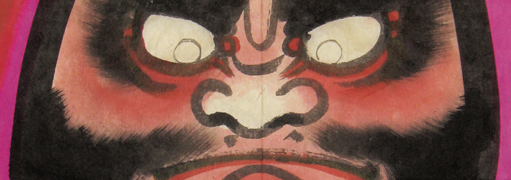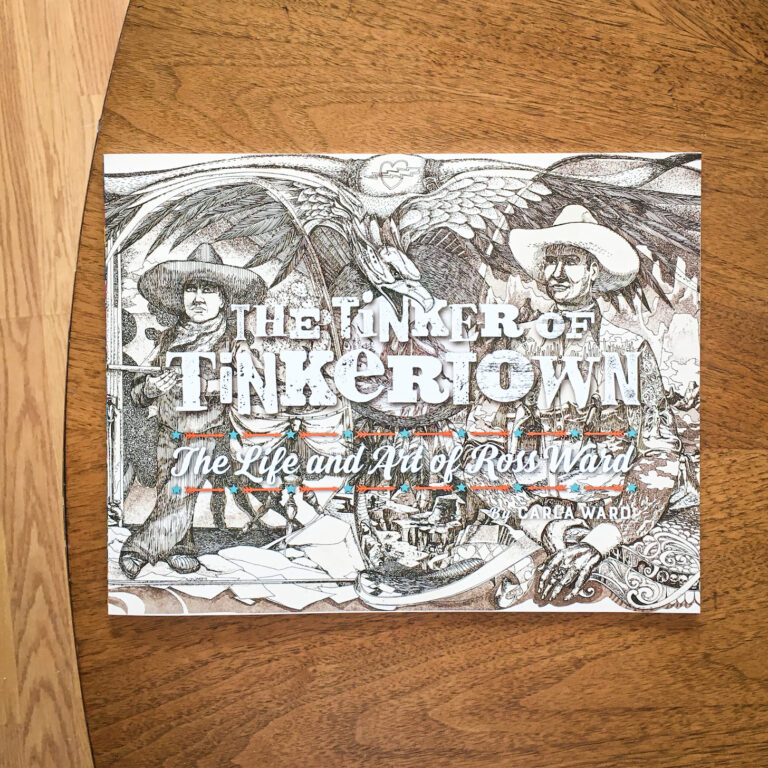Tako Kichi means “kite crazy” in Japanese. Kichi is a good word to know because it seems the Japanese are kichi for so many things—tea ceremonies, folding kimonos and arranging flowers—all of which involve meticulous attention to detail. Let’s face it: The Japanese manifest a devotion to perfection that Americans just don’t get. The more ephemeral the object of devotion (Cherry blossoms! Snow!) the better. Hence they will painstakingly handcraft a kite from split bamboo and washi paper (usually mulberry tree pulp), paint it with exquisite imagery and then just throw it up into the sky, knowing full well it’ll probably get ripped a new one by another kite.That’s right. Kite flying is not solely the territory of repressed Victorians letting loose in the park. In the Asian world, it’s a cutthroat sport hell-bent on destruction. Promises of “Japanese kite fighting” are, in part, what first lured me to the Museum of International Folk Art’s Tako Kichi: Kite Crazy in Japan exhibit. The show, originally scheduled to end in March but extended till summer on account of its popularity, will have run a full year by the time it ends this June. Now, in the chilly doldrums of January, is the perfect time to frolic amidst sparkling blue skies and the visual crackle of kites. (And by “frolic,” I just mean museum-appropriate behavior involving reading, looking and guided touching.)Two hundred kites of pop-art colors in every imaginable shape (sheets, darts, hexagons) trail in garlands down azure blue walls. The decorative imagery runs the Japanese gamut. There are Edo-style kites featuring traditional images of ukiyo-e (the “floating world” of the upper class: geishas, wrestlers, samurai) and modern anime-ish scenes of popular heroes painted on rectangular sheets, like comic panels in the sky. Some of the kites are cute and whimsical, like the cicada, puffer fish and what I call “l’il goblin kites,”—diminutive demon kites with buck teeth. Others are meant to terrify. Grotesque bushy-browed faces, rouged-up samurai about to blow a fuse, fish scales, bug bodies and wings all fall in cataracts down the wall.With over 200 kites on display from various regions in Japan—mostly from David M. Kahn’s private collection, mostly from the 20th century (some date back to the 1800s)—it’s hard not to make grandiose statements to your companions about starting your own Japanese kite collection or maybe at least buying a kite to terrorize some other kites this spring. Kite flying in Japan dates back to … well … no one knows for sure. The Encyclopedia Britannica says “time immemorial.” Most likely lifted from Chinese Buddhists, kites were long used by the Japanese in religious ceremonies, imbued with mystical powers. They’re still flown at the New Year as a symbol of hope for the future. Contemporary kite makers regard Japanese construction as the crème de la crème.If kite violence is what you’re after, don’t miss the exhibit’s looped showing of “The Great Kite Fight,” an ’80s-era “National Geographic Explorer” episode that chronicles the annual kite war of Shirone, Japan. The contest allows villagers to “release their tensions” every summer in a pitched battle between two teams on opposite sides of a river. Unlike other kite games where you paste glass shards to your kite string in hopes of slitting other kite strings, here they wrangle opposing kites to the ground with specially trained teams of kite handlers. “They train?” you ask? This is not some half-assed sport. “Kite crazy refers to people who really love kites … people who think more about kites than getting their three meals a day. Even when they go to bed, they can’t go to sleep because they see kites flying over their beds,” says one of the team leaders in the film.By the way, if kite fighting isn’t enough for you, check out the Anderson Abruzzo International Balloon Museum’s exhibit on another, less-successful, airborne mulberry-paper endeavor of the Japanese—Fugo balloon bombs. During WWII, Japanese schoolgirls assembled thousands of mulberry paper bomb-carrying balloons that were launched across the Pacific to the US that turned out to be pretty much as deadly as … kites. What’s missing from this exhibit? Well, wind. A static, docile kite and a kite screaming and snapping in the weather are two different animals. My fantasy installation of a special wind room, where we all look like rock stars with blowing hair under kites streaming on wires, remains but a fantasy. That’s okay, though. I’m afraid, in that case, my tako kichi would be through the roof.Want to dabble in tako kichi-ness yourself? The MOIFA does a stellar job of incorporating interactive and hands-on components into their exhibits—in this case, materials to construct your own miniature kite. They’ll also offer a passel of public events the week of March 17, including a craft demonstration with a traditional kite maker from Japan. On March 23, Masaaki Modegi of the Kite Museum of Japan will give a lecture followed by a kite-making workshop for kids (ages 3-13). Mark your calendar. And start your mental training.
Tako Kichi: Kite Crazy in JapanMuseum of International Folk Art Museum Hill, 706 Camino Lejo, Santa Fe
Days/Times: Tuesday through Sunday, 10am to 5pm. Closed Monday.Admission: Adult single-museum admission is $6 for New Mexico residents, $9 for nonresidents; Youth 16 and under free. Wednesdays: Seniors 60+ free with ID. Sundays: Free admission for NM residents with ID. $1 discount for students.












